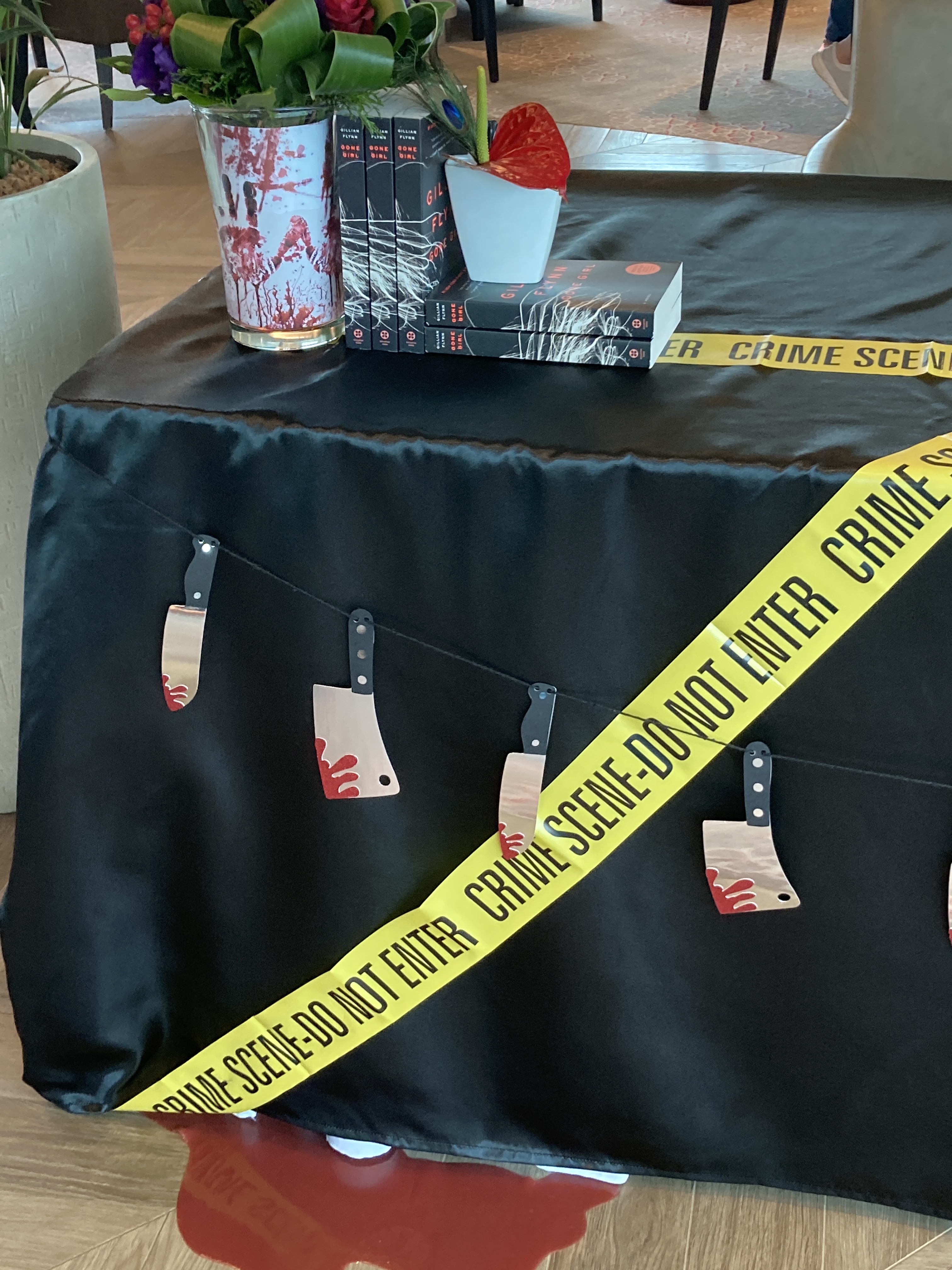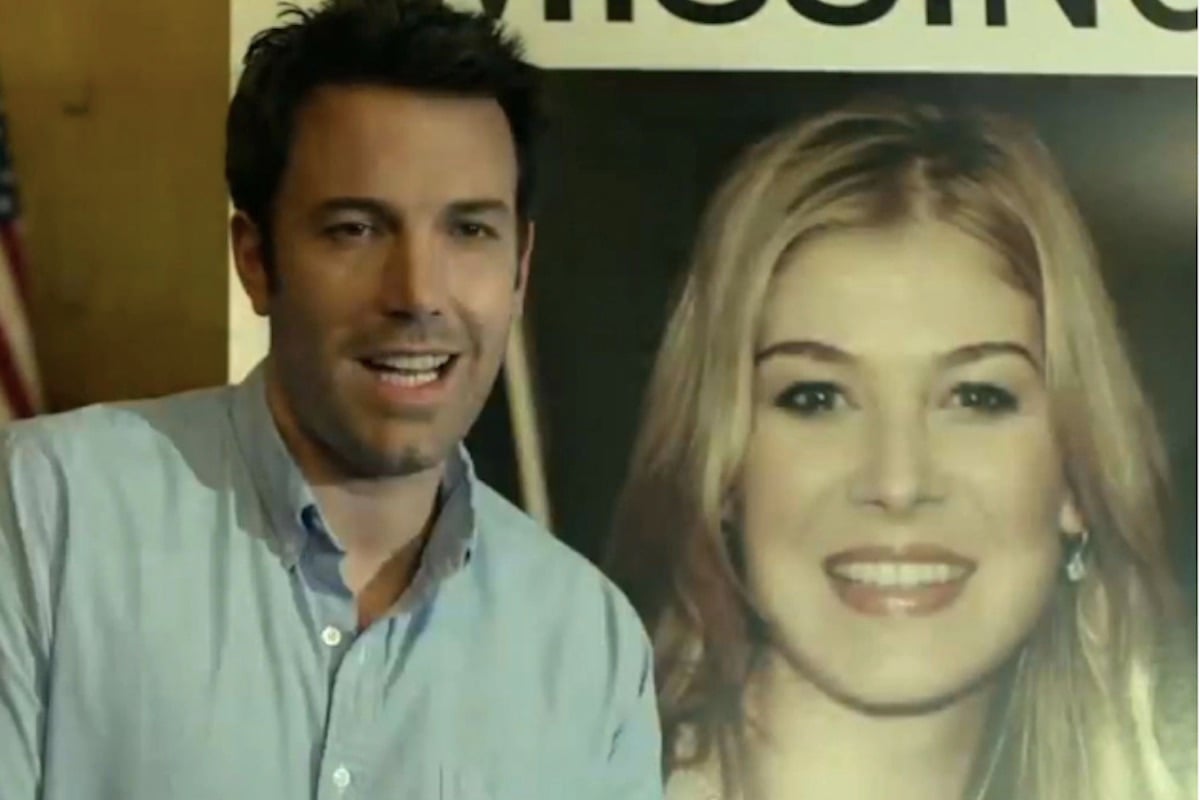Back in July of 2022, writer Gillian Flynn flooded the internet with equal parts delight and confusion when she let us all know about the existence of a Gone Girl-themed cruise. “There are still tickets available to join me on the Avalon Waterways GONE GIRL CRUISE,” she tweeted in what must have seemed like an innocuous effort to fill cabins. The tweet went viral as a number of online outlets—this one included—were filled with questions. What even was a Gone Girl cruise? Is it a floating murder mystery party? Why is it in Europe? Are there any men brave/foolish enough to sign up for a trip with this specific theme? Who is this for??
Six weeks later, at the urging of one of my colleagues and with the help of a shockingly accommodating Avalon Waterways PR rep, I somehow find myself in Budapest, standing on the deck of a cruise ship on the Danube River, hoping to get some answers.
In the end, I would never find the answers I set out for, and the entire event would wind up being both less and so, so much more than I expected.
Gone Girl!

The Gone Girl—technically, confoundingly stylized as “Gone Girl!” with an inexplicable exclamation point—cruise was eight days on the Danube river, starting in Budapest and ending in Deggendorf, Germany, with the majority of the time spent winding through Austria. Is this an appropriate setting for a celebration of Flynn’s books, with their exclusively midwestern settings? It absolutely is not! But I’m not going to complain. It was actually Flynn herself that did the best job at selling me on any sort of relevance, as she reminds me of the rich history of river-based literature.
Flynn spent years living by the Pacific Ocean in California and currently resides by Lake Michigan in Chicago. But having grown up on the rivers running through and around Kansas City, Missouri, with memories of reading Mark Twain and Agatha Christie, playing out her Death on the Nile VHS and fantasizing about sailing away on a raft, she says it’s that type of body of water that elicits the deepest feelings of literary romanticism within her.
I was not desperate to justify finding myself on the Danube rather than, say, the more thematically appropriate Lake of the Ozarks, but yes, consider me sold on my European vacation.
What/why is a Gone Girl cruise?
The way the cruise was organized, each port’s docking came with a number of choices for activities, ranging from “classic” (museums, etc.) to “active” (hiking, biking) to “discovery” (various cultural excursions). The closest any of the activities—well, the official activities, that is—came to being even remotely tied to a Gillian Flynn theme was a tour of Dracula’s castle, scheduled for Day 2. Unfortunately, climate change has decimated the water level of the Danube and we had to bypass our scheduled stop in Visegrád entirely.
Thanks to an onboard menu designed to serve local specialties paired to each location, I did still get to try chicken paprikash, which Jonathan Harker eats in the first chapter of Bram Stoker’s Dracula, and which he describes as being “thirsty.” I’m still not totally sure what that means (spicy? dry? overly sauced?) but it was delicious. That, along with a spontaneous docking in the charming town of Bratislava, Slovakia (plus the near-criminally copious amount of wine they served that first night) were fine consolations for the missed trip.
Who goes on a Gone Girl cruise?
This was perhaps my biggest question going in. Who was this for? I imagined mostly older divorcées—women in a place to be able to afford a week on a European river cruise, but who also have fantasies of framing an ex for their murder. However, after I got home, a friend let me know she had no idea I’d been on this trip for work purposes because it is—I quote—”not outside the realm of Vivian Things To Do.” So I guess I have to include myself in the reasonable demographic for such a trip.
The reality was less dramatic. The cruise was made up of about 60 passengers—about a third of the total capacity of the ship, which is likely due to the fact that we are still very much in the midst of the COVID-19 pandemic. (Was going on an international cruise during a pandemic a questionable idea? Avalon has a vaccination mandate and as far as I know, there were no cases found or contracted on board, but I did catch COVID on my flight home, so … maybe!)
The passenger makeup of a Gone Girl(!) cruise ended up being basically exactly the same as any other river cruise. (Based on what I’ve heard and read, that is, as this was my first time on one.) That means mostly retiree couples and—unlike ocean cruises—not a single child. In fact, a not-insignificant percentage of the passengers under about age 60 were traveling as part of Flynn’s own substantial entourage.
The cruise was a remarkable people-watching experience, and also made up of the types of passengers to enthusiastically embrace a sometimes painfully introverted solo traveler like myself. There was the family that immediately established themselves as the Rowdy Group: a couple celebrating their 50th wedding anniversary, traveling with their adult daughters and a son-in-law, who quickly gained a reputation for inviting fellow passengers to play shockingly honest games of Two Truths and a Lie over dinner. There was a group of older women BFFs traveling together sans husbands—IRL Golden Girls who appeared to enjoy each others’ company so much I was reticent to intrude but also desperate to ingratiate myself with them.
There was also the absolute caricature of the Peak Boomer archetype who started lecturing me about how “no one wants to listen to each other anymore” and how there are no reliable news sources left the moment I told him what I do for a living. So yes, a wide range of people were represented on the Gone Girl! Cruise.

As for how much influence the Gone Girl theme had in drawing this crowd, it turned out … not much! Most people I talked to said they thought the theme was interesting but it was not the reason they booked the trip. At least a few people had literally no idea at all that the cruise even had a theme, which must have been a weird surprise upon boarding, with even bigger, much more shocking surprises to follow. (“Our travel agent is … not very good,” one couple told me.)
There were, though, a handful of people who did come specifically for Flynn. But her presence onboard was more that of an “artist in residence” as she described it herself than any sort of attraction for guests. Toward the end of the cruise, there were two back-to-back events where passengers could interact with her: a Q&A and a book signing where the signing table was decorated with police tape, bloody kitchen knives, and a puddle of fake blood marking the optimum spot for a photo op. But for the most part, while she was present for the entire cruise, she was almost always enveloped by her substantial friend group and most passengers seemed to view her as being largely inaccessible.
An attempted murder (theme)

Beyond those two events with Flynn, there was one attempt to flesh out some sort of theme. The results were … odd.
Every evening, guests would return to our rooms to find a card or a letter, often printed with red handprints or a decorative blood splatter, featuring a quote from Flynn. Eventually, the cards began teasing a special, secret, themed event. Buzz on the ship was definitely growing leading up to this surprise outing, with speculation flying as to what we might be doing. I had my bet placed on visiting Vienna’s Crime Museum, but I thought that was a long shot based on the reviews I’d read online, which described the museum as being interesting but also extremely graphic in its depictions of real-life murders. I was wrong, as it turned out, but not because that option would have been too graphic. That, apparently, was not a deterrent.
Our second night in Vienna, those of us who opted in for the mystery event boarded two charter buses. As we winded down unlit roads taking us deeper into the Austrian countryside, our guide proceeded to tell us about her childhood neighbor, who was murdered and buried in a cellar. As it turned out, cellar murders are kind of a thing in Austria—enough for our entire night to be centered around the theme.
We filed out of our buses and were handed actual flaming torches to guide us as we stumbled (anything that happens after dinner on a cruise ship is a stumble) about a quarter mile down a dirt path until we finally stepped down into a rural wine cellar. On our way in, each of us was handed a glass that I would end up refilling many times during the night in a desperate attempt to block out the events as they unfolded. The back room of the cellar was filled with rows of benches, and we took our seats before being introduced to our speaker: a former chief detective who worked to catch the infamous Austrian serial killer Jack Unterweger.
The stories the detective had to tell were fascinating, as he was a major player in such a horrific bit of Austrian history. Hearing him speak felt a bit like getting to meet the Viennese equivalent of Paul Holes, the detective famous for his role in finally capturing the Golden State Killer—an exciting idea for pretty much any true crime fan.
But. Oh man, where to start with the but?

The big issue here is that no one here had any idea what they were walking into. We weren’t prepared and the detective clearly didn’t know that we had not made an active, informed choice to hear from him. When he put a graphic photo of a woman’s nude, brutally murdered corpse up on the screen behind him—the first of many such photos we’d see that night—no one knew what to do. Speaking with others afterward, our recollections of the night varied, as if we’d all entered some sort of drunken, delirious fugue state. But what I remember was persistent laughter from the crowd around me. I don’t blame them—it’s a natural nervous reaction to an uncomfortable situation—but it was incredibly upsetting to be sitting there, shown slide after slide of horrific crime scene photos, met with a soundtrack of snickering and even heckling.
True crime often gets a bad rap but it is entirely possible to consume the genre ethically—to be aware and respectful of victims, survivors, and the subject matter as a whole. This was not that. The entire event was especially strange because Flynn does not even work in true crime. Her work and an interest in gruesome true crime seem to have been lumped together under a general umbrella of “murder stuff.” And while there are surely a large number of fans with crossover interest (*raises hand enthusiastically*), not everyone fits into that dual category. It definitely cannot be assumed that every fan of Flynn’s brand of gender-focused psychological thriller will be happy to be subjected to surprise grisly, nude murder pics of real victims. And even for those with a wide-spanning interest in both, transparency as to what it is we’re consuming is a must if we are wanting to call that consumption ethical.
Flynn herself seemed to agree—although if so, she was careful not to directly criticize the event. When I asked for her thoughts on the evening’s events, she did acknowledge the massive difference between her work and what we saw in that cellar. While they are linked, those are two distinctly different crime genres. “I’m not necessarily interested in writing about criminology, but learning about it is very interesting to me and certainly informs my books,” she told me.
As a self-described “true crime devourer” who initially went to journalism school to build a career around covering that sort of material, she espouses the importance of ethical consumption.
“As someone who is fascinated by true crime, I also acknowledge that I’m consuming other people’s tragedies and their grief,” she says. She stresses the need to remember that these people were loved and that they’re humans deserving our respect, while also understanding why people, and especially women, are so drawn to these stories as they exemplify all the dangers we feel moving through the world every day.
“Every time we walk out of the fucking house, you have to keep in mind, in the back of your head, that something bad could happen. How many times do you watch those slides,” she said, referencing what we saw in that cellar, “and see a man show up? It just very rarely happens.”
So while Flynn might not write about the sort of real-life crimes depicted in that cellar, she is very much interested in why women are being killed in “a slaughterhouse amount of numbers.”
There is absolutely the potential to theme events on a Gone Girl cruise around these ideas, even if this one, in particular, did not hit the mark.
Gone Girl! takeaways
In the end, the Gone Girl(!) cruise answered pretty much none of my questions. It was an undeniably incredible experience. Would I go again? Yes, absolutely, 100% (if I were the kind of person who could afford regular European river cruise excursions). Avalon has an entire “Storyteller Series,” with cruises featuring writers like Candace Bushnell (Sex & the City), Diana Gabaldon (Outlander), and Cheryl Strayed (Wild). I would hope that some of those cruises—or others introduced in the future—have more immersive theming because the potential for an incredible literary adventure is absolutely there. Even something as basic as a book club or a Paint & Sip event while discussing true crime would be welcome onboard activities for this sort of excursion—and are even events that even those unaware of the theme when booking could either embrace or ignore.
—
I am so curious to know: Is a Gone Girl or otherwise literature-themed vacation something you’d consider? What would your ideal version of those events look like? Please share in the comments!
(image: 20th Century Fox)
Disclosure: Avalon Waterways provided the author with a discounted media rate for the cost of the cruise.










Published: Dec 20, 2022 11:39 am